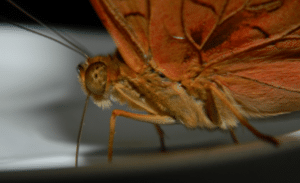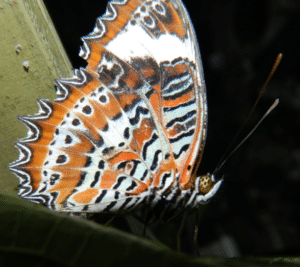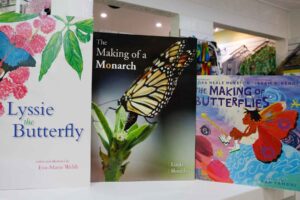Butterfly vision is different from birds and humans who both see from the red light spectrum through to violet.
Butterflies see from the red spectrum through to ultra violet. This is very useful for the butterfly as they drink nectar from flowers and flowers fluoresce in the ultraviolet spectrum to attract butterflies to feed and pollinate. Many butterflies have ultraviolet markings on their wings which also help with mate recognition.
Butterflies have big round eyes that are called hemispherical compound eyes. Each eye has up to 17000 tiny lenses that work in unison and create a mosaic view of their environment. Each lens sees a slightly different angle from the next lens, so the butterfly can see approximately 314 degrees around itself and from 1cm to 200 metres away, in sharp focus.
Butterflies can see polarized light which means they know the position of the sun and can use it as a compass. Monarch butterflies use the sun to navigate, when they migrate from Canada to Mexico, for the winter, every year.
Butterflies are extremely good at detecting movement and gauging the distance of a predator. This gives the butterfly time to take evasive action. For these reasons, it’s very difficult to sneak up on a butterfly!








